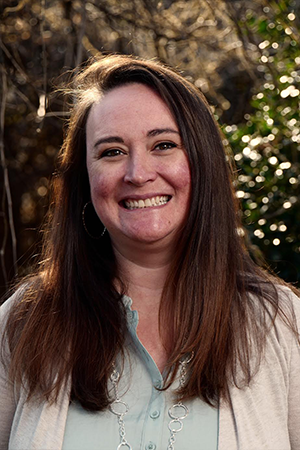The Of Circularly Polarized Luminescence
The Of Circularly Polarized Luminescence
Blog Article
Spectrophotometers Can Be Fun For Anyone
Table of ContentsSome Known Facts About Spectrophotometers.Excitement About Circularly Polarized LuminescenceAn Unbiased View of Uv/vis/nirNot known Facts About Uv/vis/nirWhat Does Spectrophotometers Do?Some Ideas on Uv/vis/nir You Need To KnowNot known Details About Uv/vis/nir More About Circularly Polarized Luminescence9 Easy Facts About Circular Dichroism DescribedLittle Known Facts About Circularly Polarized Luminescence.A Biased View of Uv/visThe Best Guide To Uv/visCircular Dichroism - Questions
It is then scanned through the sample and the recommendation solutions. Fractions of the occurrence wavelengths are sent through, or shown from, the sample and the recommendation. The resultant light strikes the photodetector device, which compares the relative strength of the 2 beams. Electronic circuits transform the relative currents into linear transmission percentages and/or absorbance/concentration worths.The transmission of a referral substance is set as a standard (information) value, so the transmission of all other compounds are tape-recorded relative to the initial "zeroed" substance. The spectrophotometer then transforms the transmission ratio into 'absorbency', the concentration of particular parts of the test sample relative to the initial substance.
Because samples in these applications are not easily offered in big quantities, they are especially fit to being analyzed in this non-destructive strategy. In addition, precious sample can be conserved by using a micro-volume platform where as low as 1u, L of sample is required for complete analyses. A short description of the procedure of spectrophotometry consists of comparing the absorbency of a blank sample that does not consist of a colored substance to a sample that consists of a colored substance.
Circularly Polarized Luminescence - The Facts
In biochemical experiments, a chemical and/or physical residential or commercial property is picked and the procedure that is utilized specifies to that home in order to derive more details about the sample, such as the amount, purity, enzyme activity, and so on. Spectrophotometry can be used for a number of methods such as identifying optimal wavelength absorbance of samples, figuring out ideal p, H for absorbance of samples, figuring out concentrations of unknown samples, and figuring out the p, Ka of different samples.: 21119 Spectrophotometry is likewise a handy process for protein purification and can likewise be used as an approach to produce optical assays of a substance.
It is possible to know the concentrations of a 2 element mixture utilizing the absorption spectra of the standard services of each part. To do this, it is required to know the extinction coefficient of this mixture at two wave lengths and the termination coefficients of options which contain the known weights of the 2 parts.

The 30-Second Trick For Circularly Polarized Luminescence
Region. The concentration of a protein can be estimated by determining the OD at 280 nm due to the presence of tryptophan, tyrosine and phenylalanine.
This method requires a spectrophotometer capable of determining in the UV region with quartz cuvettes.: 135 Ultraviolet-visible (UV-vis) spectroscopy includes energy levels that delight electronic transitions. Absorption of UV-vis light delights molecules that are in ground-states to their excited-states.
20. 8 O.D. Ink producers, printing business, fabrics vendors, and many more, need the data provided through colorimetry. They take readings in the area of every 520 nanometers along the visible area, and produce a spectral reflectance curve or a data stream for alternative discussions. These curves can be utilized to evaluate a new batch of colorant to check if it makes a match to specifications, e.
The Definitive Guide to Uv/vis/nir
Standard noticeable area spectrophotometers can not detect if a colorant or the base product has fluorescence. This can make it hard to handle color concerns if for instance one or more of the printing inks is fluorescent. Where a colorant contains fluorescence, a bi-spectral fluorescent spectrophotometer is utilized (https://linktr.ee/olisclarity1). There are two major setups for visual spectrum spectrophotometers, d/8 (round) and 0/45.
Researchers use this instrument to measure the amount of substances in a sample. If the compound is more focused more light will be taken in by the sample; within small varieties, the Beer, Lambert law holds and the absorbance in between samples differ with concentration linearly. When it comes to printing measurements two alternative settings are frequently utilized- without/with uv filter to manage much better the effect of uv brighteners within the paper stock.
How Spectrophotometers can Save You Time, Stress, and Money.
Some applications need little volume measurements which can be carried out with micro-volume platforms. As explained in the applications area, spectrophotometry can be utilized in both qualitative and quantitative analysis of DNA, RNA, and proteins. Qualitative analysis can be utilized and spectrophotometers are utilized to record spectra of compounds by scanning broad wavelength regions to figure out the absorbance residential or commercial properties (the strength of the color) of the compound at each wavelength.

Rumored Buzz on Uv/vis/nir
One major element is the kind of photosensors that are readily available for different spectral regions, but infrared measurement is also tough due to the fact that virtually everything releases IR as thermal radiation, specifically at wavelengths beyond about 5 m. Another complication is that several materials such as glass and plastic take in infrared, making it incompatible as an optical medium.
Samples for IR spectrophotometry may be smeared in between two discs of potassium bromide or ground with potassium bromide and pressed into a pellet. Where aqueous solutions are to be measured, insoluble silver chloride is used to construct the cell. Spectroradiometers, which run nearly like check my site the noticeable region spectrophotometers, are created to measure the spectral density of illuminants. Obtained Dec 23, 2018. Basic Lab Approaches for Biochemistry and Biotechnology (2nd ed.). The essential guide to analytical chemistry.
Oke, J. B.; Gunn, J. E.
Examine This Report about Circular Dichroism

1021/ac50048a728. ISSN0003-2700. Ninfa AJ, Ballou DP, Benore M (2015 ). Essential Laboratory Approaches for Biochemistry and Biotechnology (3, rev. ed.). Hoboken, NJ: Wiley & Sons. p. 77. ISBN9780470924525. OCLC915641828. "Completely Automatic Double Beam - Atomic Absorption Spectrophotometer (AA 8000)". Lab Equipment. Labindia Analytical Instruments Pvt. Ltd. "Spectrophotometry Applications and Principles".
Getting My Spectrophotometers To Work
Obtained Jul 4, 2018. Trumbo, Toni A.; Schultz, Emeric; Borland, Michael G.; Pugh, Michael Eugene (April 27, 2013). "Applied Spectrophotometry: Analysis of a Biochemical Mixture". Biochemistry and Molecular Biology Education. 41 (4 ): 24250. doi:10. 1002/bmb. 20694. PMID 23625877. (PDF). www. mt.com. Mettler-Toledo AG, Analytical. 2016. Recovered Dec 23, 2018. Cortez, C.; Szepaniuk, A.; Gomes da Silva, L.
"Checking Out Proteins Filtration Methods Animations as Tools for the Biochemistry Teaching". Journal of Biochemistry Education. 8 (2 ): 12. doi:. Garrett RH, Grisham CM (2013 ). Biochemistry. Belmont, CA: Cengage. p. 106. ISBN 978-1133106296. OCLC 801650341. Vacation, Ensor Roslyn (May 27, 1936). "Spectrophotometry of proteins". Biochemical Journal. 30 (10 ): 17951803. doi:10. 1042/bj0301795.
PMID 16746224. Hermannsson, Ptur G.; Vannahme, Christoph; Smith, Cameron L. C.; Srensen, Kristian T.; Kristensen, Anders (2015 ). "Refractive index dispersion picking up utilizing a range of photonic crystal resonant reflectors". Applied Physics Letters. 107 (6 ): 061101. Bibcode:2015 Ap, Ph, L. 107f1101H. doi:10. 1063/1. 4928548. S2CID 62897708. Mavrodineanu R, Schultz JI, Menis O, eds.
The Basic Principles Of Circular Dichroism
U.S. Department of Commerce National Bureau of Standards special publication; 378. Washington, D.C.: U.S. National Bureau of Standards.
The procedure starts with a controlled light that lights up the examined sample. When it comes to reflection, as this light communicates with the sample, some is taken in or discharged. The discharged light journeys to the detector, which is examined, measured, and provided as industry-standard color scales and indices.
Market governing bodies normally define specific metrics for specific products, such as Tomato and Coffee indices. The streamlined math appears like this: Where R is the reflection coefficient. All terms are assessed over the visible spectrum from 400 to 700 nm. When it comes to transmission, when the light communicates with the sample, it is either absorbed, reflected, or sent.
Circularly Polarized Luminescence - Truths
Examples consist of APHA (American Public Health Association) for watercolor and pureness analysis, ASTM D1500 for petrochemical color analysis, edible oil indices used in food, and color analyses of drinks. The streamlined math looks like this:. Where T is the transmission coefficient. All terms are examined over the noticeable spectrum from 400 to 700 nm.
Image Credit: Matej Kastelic/ Dr. Arnold J. Beckman and his coworkers at the National Technologies Laboratories first developed the spectrophotometer in 1940. In 1935 Beckman founded the company, and the discovery of the spectrophotometer was their most ground-breaking invention. Dr. Bruce Merrifield, a Nobel prize-winning biochemist, mentioned that the innovation of the spectrophotometer was "most likely the most important instrument ever established towards the development of bioscience." Before the discovery of the spectrophotometer, chemical analyses took weeks to finish, with 25% accuracy.
Rumored Buzz on Spectrophotometers
99% accuracy. Over time, researchers kept enhancing the spectrophotometer style to improve its performance. For example, the UV abilities of the model B spectrophotometer were improved by changing the glass prism with a quartz prism. Eventually, the Model DU was created, consisting of a hydrogen light and other improvements. This instrument was used in commercial laboratories, clinics, and chemistry and biochemistry departments.
Generally, a spectrophotometer is made up of 2 instruments, particularly, a spectrometer and a photometer. A fundamental spectrophotometer includes a light source, a monochromator, a collimator for straight light beam transmission, a cuvette to put a sample, and a photoelectric detector.
The Of Uv/vis/nir
There are various types of spectrophotometers in numerous shapes and sizes, each with its own function or performance. A spectrophotometer determines just how much light is reflected by chemical components. circular dichroism. It measures the distinction in light strength based on the total amount of light introduced to a sample and the amount of light beam that passes through the sample service
According to the instrument's style, the sample is placed between the spectrometer and the photometer. After the light is passed through the sample, the photometer measures its intensity and shows the reading. A spectrophotometer is utilized to determine the concentration of both colorless and colored solutes in a service. This instrument is utilized to determine the rate of a reaction.
Report this page